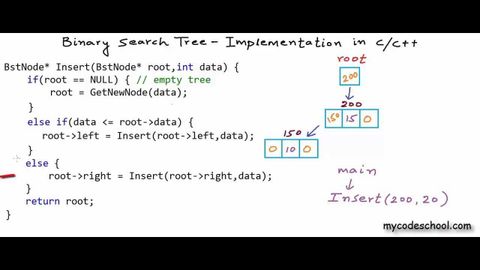二進制搜索樹 - 在C/C++中的實現 (Binary search tree - Implementation in C/C++)
Hhart Budha 發佈於 2021 年 01 月 14 日  沒有此條件下的單字
沒有此條件下的單字- n. (c./u.)地址;演說;致詞;位址 (電腦)
- v.t.在...上寫收件人姓名地址;發表講話;發表演說;探討
- v.t./i.離開;別離;死後留下;使保持(某狀態);沒有吃完(或用完);遺留;使…成為
- n. (u.)允許;同意;假;休假
- n. (c./u.)剩菜
US /ˈfʌŋkʃən/
・
UK /'fʌŋkʃn/
- n.事件;函數;功能;運作;函數 (電腦)
- v.i.當作;運作
- n.呼喚;召喚;叫聲;判定;判決;拜訪;短時間逗留;(裁判的)判決
- v.t./i.罷工;拜訪某人;拜訪某地;打電話;叫喊;大叫;大喊
- v.i.叫喊;呼叫
- v.t.舉行選舉;召集會議;判決;稱為;叫作;判定

